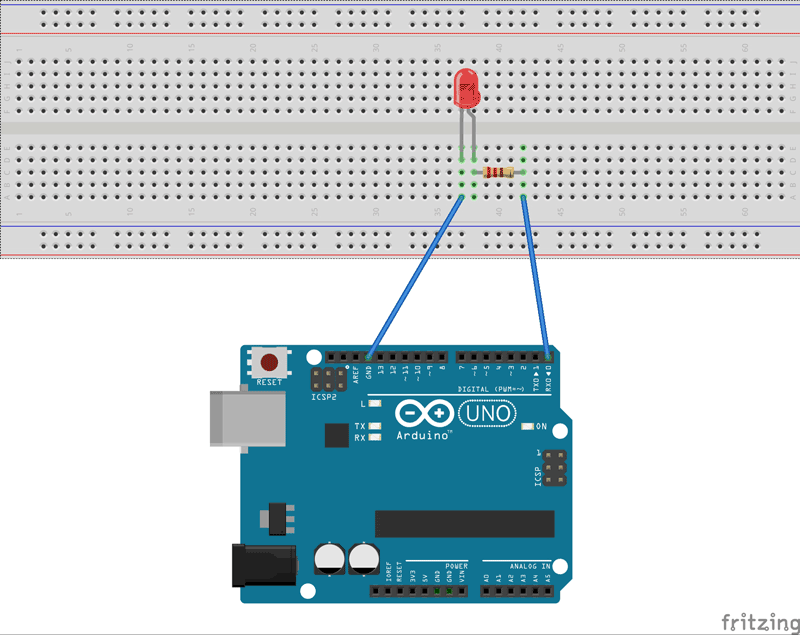

- Diagram of arduino uno how to#
- Diagram of arduino uno serial#
- Diagram of arduino uno driver#
- Diagram of arduino uno software#
The Arduino Uno board can be powered via the USB connection or with an external power supply. Instead, it features the Atmega16U2 (Atmega8U2 up to version R2) programmed as a USB-to-serial converter.
Diagram of arduino uno driver#
The Uno differs from all preceding boards in that it does not use the FTDI USB-to-serial driver chip. If more than 500 mA is applied to the USB port, the fuse will automatically break the connection until the short or overload is removed.

Although most computers provide their own internal protection, the fuse provides an extra layer of protection. The Arduino Uno has a resettable polyfuse that protects your computer's USB ports from shorts and overcurrent. See this user-contributed tutorial for more information. Or you can use the ISP header with an external programmer (overwriting the DFU bootloader). You can then use Atmel's FLIP software (Windows) or the DFU programmer (Mac OS X and Linux) to load a new firmware.
Diagram of arduino uno serial#
You can also bypass the bootloader and program the microcontroller through the ICSP (In-Circuit Serial Programming) header using Arduino ISP or similar see these instructions for details.

It communicates using the original STK500 protocol ( reference, C header files). The ATmega328 on the Arduino Uno comes preprogrammed with a bootloader that allows you to upload new code to it without the use of an external hardware programmer. For details, see the reference and tutorials. Select "Arduino Uno from the Tools > Board menu (according to the microcontroller on your board). The Arduino Uno can be programmed with the ( Arduino Software (IDE)). You can find here your board warranty information. Need any help with your board please get in touch with the official Arduino User Support as explained in our Contact Us page.
Diagram of arduino uno how to#
Need Help?Ĭheck the Arduino Forum for questions about the Arduino Language, or how to make your own Projects with Arduino.
Diagram of arduino uno software#
The Getting Started with Arduino Uno page contains all the information you need to configure your board, use the Arduino Software (IDE), and start tinkering with coding and electronics.įrom the Tutorials section you can find examples from libraries and built-in sketches as well other useful information to expand your knowledge of the Arduino hardware and software.įind inspiration for your Uno projects from our tutorial platform Project Hub. If you are interested in boards with similar functionality, at Arduino you can find: The Uno board is the first in a series of USB Arduino boards, and the reference model for the Arduino platform for an extensive list of current, past or outdated boards see the Arduino index of boards. The Uno board and version 1.0 of Arduino Software (IDE) were the reference versions of Arduino, now evolved to newer releases. "Uno" means one in Italian and was chosen to mark the release of Arduino Software (IDE) 1.0. You can tinker with your Uno without worrying too much about doing something wrong, worst case scenario you can replace the chip for a few dollars and start over again. It contains everything needed to support the microcontroller simply connect it to a computer with a USB cable or power it with a AC-to-DC adapter or battery to get started. It has 14 digital input/output pins (of which 6 can be used as PWM outputs), 6 analog inputs, a 16 MHz ceramic resonator (CSTCE16M0V53-R0), a USB connection, a power jack, an ICSP header and a reset button.

Arduino Uno is a microcontroller board based on the ATmega328P ( datasheet).


 0 kommentar(er)
0 kommentar(er)
